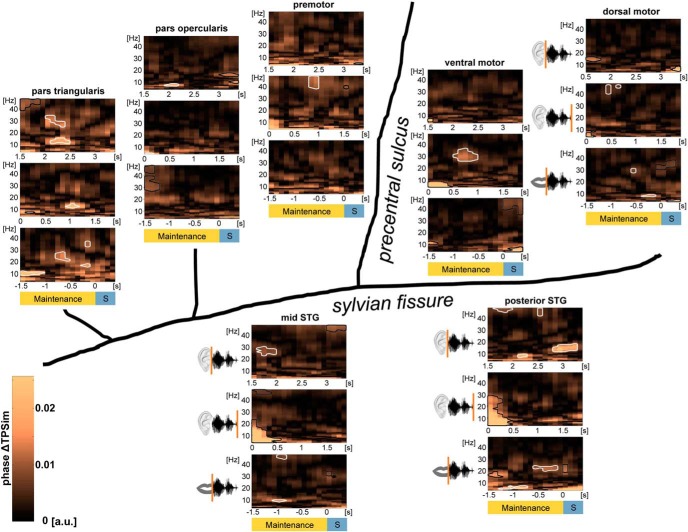Figure 4.
Sentence identity coding (phase ΔTPSim) during verbal WM: group data of left perisylvian ECoG. Plots represent averages over electrodes and participants during the maintenance phase with trials time-locked on the stimulus onset (0 s, top panels), on the different stimulus offsets (0 s, middle panels), and on the individual speech onsets (0 s, bottom panels). Phase ΔTPSim based on the complex coefficient of phase-locking values of the time frequency-resolved data in the low-frequency range (4–48 Hz) are shown in each region. Significant clusters during WM maintenance are framed in white (p < 0.01, stepwise Bonferroni-corrected). Borders of clusters that are too close to stimulus offset or the speech onset to be interpreted as WM-related have been colored in black. Temporal information coding (phase ΔTPSim) was observed during WM in the pars triangularis of the IFG in all of the three analyses. Phase ΔTPSim in motor cortices was first observed after the stimulus was perceived. Phase ΔTPSim in auditory association cortices was primarily observed in WM processes related to stimulus onset, respectively, to speech onset. Time points on the x axes correspond to the middle of the 500 ms analysis window. Significant clusters at the borders of the maintenance phase were not interpreted further because these effects could have been generated by the listening or the speaking phase. S, Speaking.

